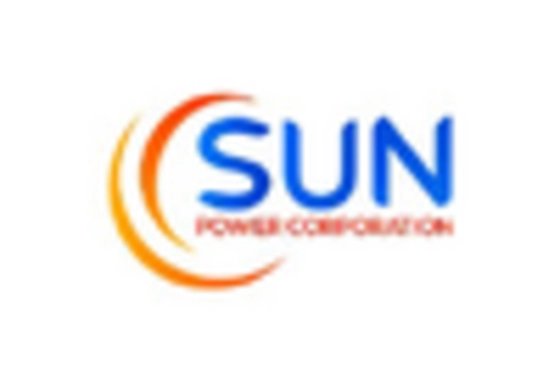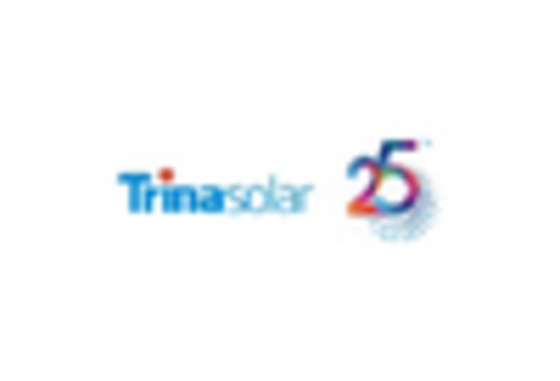The Residential Solar Tracker Market is currently characterized by a dynamic competitive landscape, driven by increasing demand for renewable energy solutions and advancements in solar technology. Key players such as Array Technologies (US), Nextracker (US), and SolarEdge Technologies (IL) are strategically positioning themselves through innovation and regional expansion. Array Technologies (US) has focused on enhancing its product offerings with advanced tracking systems that optimize energy capture, while Nextracker (US) has been expanding its footprint in emerging markets, indicating a robust growth strategy. SolarEdge Technologies (IL) emphasizes digital transformation, integrating smart technology into its solar solutions, which collectively shapes a competitive environment that is increasingly focused on technological advancement and market responsiveness.
In terms of business tactics, companies are localizing manufacturing to reduce costs and enhance supply chain efficiency. The market appears moderately fragmented, with several players vying for market share, yet the influence of major companies is significant. This competitive structure allows for a diverse range of products and services, catering to various consumer needs while fostering innovation across the sector.
In August 2025, Array Technologies (US) announced a partnership with a leading energy provider to deploy its latest solar tracking technology in residential projects across the Midwest. This strategic move not only enhances Array's market presence but also aligns with the growing trend of integrating advanced solar solutions into residential energy systems. The partnership is expected to drive significant growth in the region, showcasing Array's commitment to innovation and collaboration.
In September 2025, Nextracker (US) launched a new line of smart solar trackers designed specifically for residential applications, incorporating AI-driven analytics to optimize energy production. This development underscores Nextracker's focus on technological advancement and its intent to capture a larger share of the residential market. By leveraging AI, Nextracker positions itself as a leader in smart solar technology, potentially reshaping consumer expectations and industry standards.
In July 2025, SolarEdge Technologies (IL) expanded its product portfolio by introducing a new energy management system that integrates seamlessly with its solar inverters and trackers. This strategic enhancement reflects SolarEdge's commitment to providing comprehensive energy solutions for residential customers. The integration of energy management capabilities is likely to enhance customer satisfaction and loyalty, as homeowners increasingly seek holistic solutions for energy efficiency.
As of October 2025, the competitive trends in the Residential Solar Tracker Market are increasingly defined by digitalization, sustainability, and the integration of AI technologies. Strategic alliances among key players are shaping the landscape, fostering innovation and collaboration. Looking ahead, competitive differentiation is expected to evolve, with a shift from price-based competition to a focus on technological innovation, reliability in supply chains, and enhanced customer experiences. This transition suggests that companies that prioritize innovation and sustainability will likely emerge as leaders in the market.















Leave a Comment